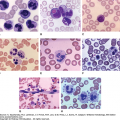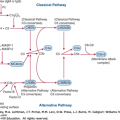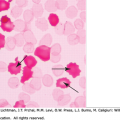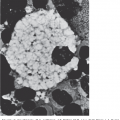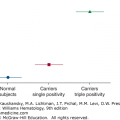INTRODUCTION
SUMMARY
Vaccines are biologic substances that are designed to stimulate the host immune system to elicit a neutralizing response against clinically relevant targets, including pathogens and tumors*. Active immunotherapy with vaccines has been extremely effective as prevention against infectious pathogens. However, effective vaccine therapy of chronic infectious diseases or cancer, in the therapeutic setting, remains a promising but largely unrealized goal. Hematologic malignancies are an excellent model system for vaccine therapies, in part because of accessibility to the hematopoietic and lymphatic space and susceptibility to immune effector mechanisms and availability of tumor cells for mechanistic studies.
Acronyms and Abbreviations
cDNA, complementary DNA; CTLA-4, cytotoxic T-lymphocyte antigen-4; GM-CSF, granulocyte-monocyte colony-stimulating factor; HLA, human leukocyte antigen; IL, interleukin; KLH, keyhole limpet hemocyanin; PD-1, programmed cell death protein-1; PD-L, programmed death ligand.
ADVANTAGES OF CANCER VACCINE THERAPY
Immunity elicited by therapeutic cancer vaccines offers several advantages over passive immunotherapy using monoclonal antibodies. In active immune therapy, all components of the effector immune response are host derived without murine or xenogeneic components that could cause indirect toxicity. The lack of foreign components also allows the host response to be sustained. Also, if the vaccine contains more than a single determinant of the target antigen, the immune response could be broad in scope, recognizing more than a single epitope in the antigen (polyclonal). This feature might be of particular importance for cancer immunotherapy, as mutation of individual peptide epitopes is a possible mechanism of immune evasion by tumors. In addition to inducing antibodies, which can recognize intact proteins on the surface of tumor cells, vaccines activate T cells that can recognize peptide fragments derived from proteins that may be endogenously processed and presented on the surface of tumor cells. Such T cells have various effector mechanisms capable of neutralizing tumor cells, including lysis of the tumor cell by cell-to-cell contact and the local production of cytokines that might directly neutralize tumor cells (e.g., interferon-γ).
*This chapter was written by Sattva S. Neelpu and Larry W. Kwak in the eighth edition and portions of that text have been retained.
COMPONENTS OF THERAPEUTIC CANCER VACCINES
Most therapeutic cancer vaccines that are being tested in clinical trials have at least three components: antigenic material derived from the tumor, a carrier, and an adjuvant. The antigenic material is usually a protein or peptide derived from the tumor that is either uniquely expressed or is overexpressed in the tumor, compared with normal tissues. A unique tumor antigen or the overexpression of the antigen to prevent the tumor is necessary to prevent the induction of an unwanted autoimmune response against normal tissues following vaccination. The carrier is necessary for delivery of the tumor antigen to antigen-presenting cells, such as dendritic cells, so as to induce the immune response against the tumor antigen. The third component of a cancer vaccine, the adjuvant, is usually a cytokine or other nonspecific immune stimulant to facilitate an enhanced immune response against the tumor antigen.
Both conventional and novel technologies used to define cancer-associated antigens, such as serologic analysis by recombinant expression cloning (SEREX), serial analysis of gene expression (SAGE), screening tumor complementary DNA (cDNA) libraries with tumor-reactive T cells, and characterization of peptides eluted from tumor-derived human leukocyte antigen (HLA) molecules, have resulted in a rapidly growing list of candidate tumor antigens for various hematologic malignancies (Table 27–1). The majority of these candidate antigens have been identified since 1998. Furthermore, the application of genomic and proteomic techniques, combined with the feasibility of isolating sufficient quantities of clonogenic tumor cells from individual patients, should identify additional targets that are differentially expressed in tumors as compared with normal tissues.
| Antigen | Reference |
|---|---|
| Minor histocompatibility antigens (HA-1, HA-2) | 1 |
| Proteinase-3 | 2 |
| Wilms tumor antigen-1 | 3 |
| B-cell receptor (immunoglobulin idiotype) | 4 |
| Anaplastic lymphoma kinase | 5 |
| Sperm protein 17 | 6 |
| Sperm protein associated with the nucleus on X chromosome (SPAN-X) | 7 |
| CML-66 | 8 |
| Survivin | 9 |
| HM1.24 | 10 |
| Immature laminin receptor protein | 11 |
| BCR-ABL fusion protein | 12 |
| Aurora kinase | 13 |
| Fibromodulin | 14 |
Desirable characteristics for candidate target antigens for immune therapy include antigens that are selectively or aberrantly expressed by the tumor or that are required to maintain the malignant cell phenotype or cell survival. Even though the adaptive immune response is comprised of both humoral and cellular components, most efforts at tumor vaccination have focused on eliciting T-cell responses because of their central role in regulating and mediating the overall adaptive response (Chap. 76). Host T-cell recognition of such antigens requires that they are naturally processed and presented by tumor cells into peptides that bind host HLA molecules. Optimally, the candidate antigen should contain both CD4+ and CD8+ T-cell epitopes. Antigens recognized by humoral immune responses must be expressed on the tumor cell surface, and the relevant epitopes must be accessible to antibody molecules. Immunogenic tumor antigens should provoke a strong effector response and not induce tolerance.
Vaccine therapy does not necessarily require a completely defined tumor antigen. Vaccines can consist of whole tumor cells or subcellular components containing putative antigens. For example, autologous tumor cells engineered to overexpress cytokines such as granulocyte-macrophage colony-stimulating factor (GM-CSF),15,16 or activated ex vivo by CD40 receptor engagement,17 can be effective at inducing tumor-specific T cells with as yet undefined antigen specificity. Similarly, transfer of the gene encoding CD40-ligand into chronic lymphocytic leukemia cells induced CD4+ and CD8+ T-cell responses in human patients.18 Vaccination with membrane proteins extracted from tumor cells and incorporated into liposomes along with interleukin (IL)-2 is another strategy that is in clinical testing.19
Effective delivery of the target antigen to the immune system is critical for the successful induction of immunity. For most tumor antigens, this is a daunting challenge, as most antigens (with the exception of viral antigens associated with cancers) are weakly immunogenic, self, or tissue-differentiation antigens.
Many vaccine-delivery strategies use dendritic cells. These key antigen-presenting cells are principally responsible for initiating a host immune response.20 The cells, represented in minute quantities, have the powerful capacity to take up antigens, and once activated, to present processed peptides to T cells. Accordingly, optimizing the delivery of tumor antigens to specialized antigen-presenting cells is critical. Such efforts have included isolation of dendritic cells from blood, followed by physical loading with protein or peptide antigens, or introducing the genes for candidate antigens by transfection with cDNA or messenger RNA, or by fusion with whole tumor cells. Loaded dendritic cells have been administered to patients as vaccines.21
An alternative strategy is to target the delivery of antigens to dendritic cells in vivo. Traditional approaches focused on attempts to make the antigen look foreign to the host immune system; for example, by chemical linkage to larger, highly immunogenic proteins (carriers) or incorporation into liposomes. Rational approaches to increase the efficiency of antigen delivery to dendritic cells have included genetic fusion of the gene encoding the antigen to one encoding biologically active molecules that has the ability to target cell-surface receptors on antigen-presenting cells. Such targeting molecules have included cytokines, chemokines, antibody Fc or Fab fragments, transferrin, CD40, and mannose, which serve as ligands for specific receptors on antigen-presenting cells.22 Such molecular vaccines can be administered as naked DNA or as fusion proteins. Other promising approaches to target dendritic cells in vivo are represented by recombinant viral or bacterial vectors or virus-like particles.23,24
Traditionally, immunologic adjuvants, described by the late Charles Janeway as “immunology’s dirty little secret,” such as alum and oil-in-water emulsions (e.g., incomplete Freund adjuvant), provide a physical depot for slow release of antigen. Adjuvants also serve as general immune stimulants by providing a danger signal to activate antigen-presenting cells. This feature describes classical adjuvant components, such as bacterial cell wall extracts, as well as unmethylated CpG DNA sequences, which deliver maturation signals to dendritic cells through toll-like receptors (Chap. 20).25
Stay updated, free articles. Join our Telegram channel

Full access? Get Clinical Tree



